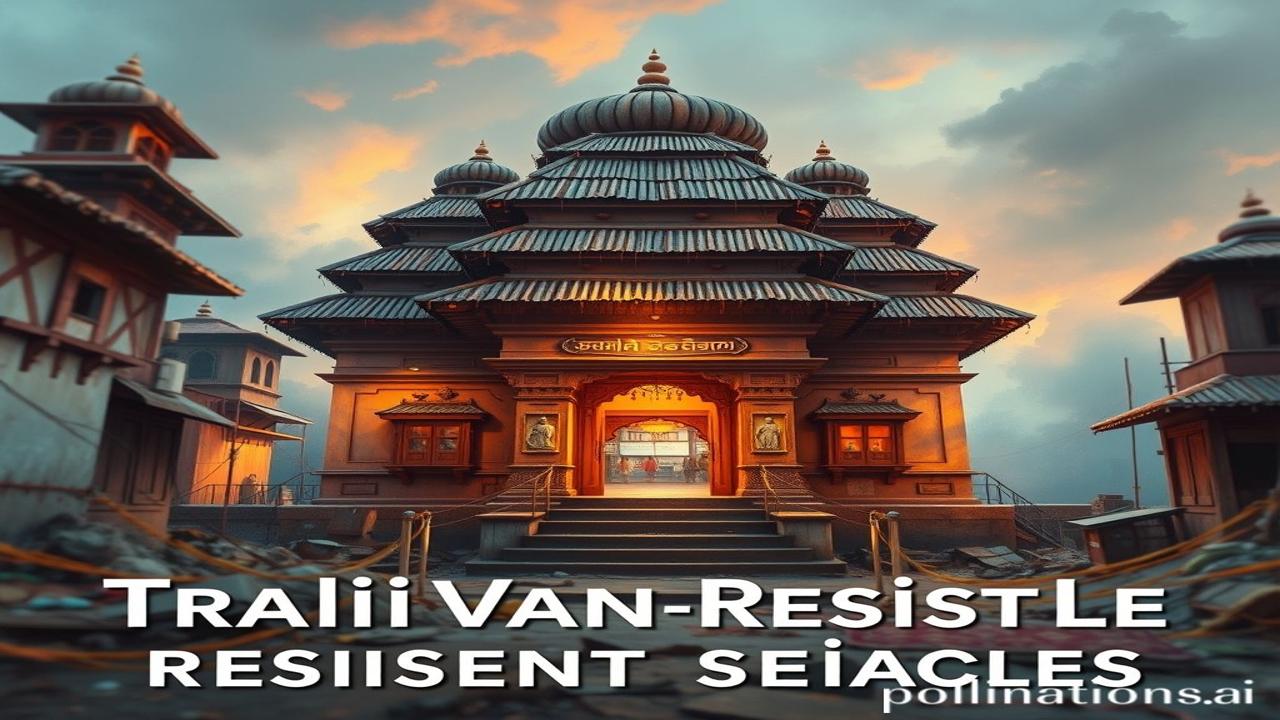Waqt Ki Mar Se Daro, Par Pyaar Bhi Karo: Traditional Disaster-Resistant Structures
Kabhi socha hai, jab aasmaan mein bijli kadakti hai, jab zameen hil jaati hai, tab hum kahan jaate hain? Hum bhaagte hain, hum chhipte hain, hum rote hain… Par, socho, agar humare ghar, humari imaratein hi aisi bani hoti ki woh in aafaton ka muqabla kar sake? Waqt ki dhool mein dabi, kuch aisi hi kahaniyan humari dharohar mein chhupi hain – kahaniyan un structures ki jo na sirf sundar the, balki shaktishali bhi. Aaiye, unke baare mein jaanen.
Kya Hai Yeh “Traditional Disaster-Resistant Structures,” Aur Kahan Se Aaye?
Simply put, these are buildings and construction techniques that have been developed over centuries to withstand natural disasters like earthquakes, floods, cyclones, and droughts. Think of it as nature’s asana, adapted by our ancestors. Yeh koi nayi cheez nahi hai; balki, yeh Bharat ki kala ka ek important hissa hai, jo generations se chala aa raha hai.
Hum baat kar rahe hain Indus Valley Civilization se lekar Mughal architecture tak, aur uske baad bhi. Har era mein, architects and engineers ne local materials aur climate ko samajh kar, aise structures banaye jo na sirf beautiful the, balki disaster-proof bhi the. For example, the ancient city of Dholavira (around 2650 BCE) had sophisticated water management systems to deal with droughts and floods. Similarly, in earthquake-prone areas like Kashmir and Himachal Pradesh, traditional Dhajji Dewari construction (using timber frames and infill) helped buildings withstand seismic activity.
Yeh important isliye hai kyunki yeh sirf past ki kahani nahi hai, balki present aur future ke liye ek lesson bhi hai. Global warming aur extreme weather ke badhte khatron ke beech, in techniques ko seekhna aur apply karna, humari suraksha ke liye bahut zaruri hai.
Zameeni Sach – Log Aur Jeevan: The Builders and The Built
Imagine a village in Assam, constantly threatened by floods. There, houses are traditionally built on stilts, known as Chang Ghars. Chang Ghar ka concept simple hai: raise the living space above the flood level.
Let’s picture a farmer, Kishan, talking to his son, Rahul:
Kishan: “Rahul, yeh baans ke khambe dekh raha hai? Yeh humare ghar ko nadi ke gusse se bachate hain.”
Rahul: “Par Baba, agar nadi zyada uchal gayi toh?”
Kishan: “Toh bhi humara ghar salamat rahega. Humne dhyaan se majboot baans istemal kiya hai, aur ghar ko aise banaya hai ki pani aasani se nikal jaaye.”
Ya phir socho, Rajasthan mein, jahan garmi jala deti hai. Wahan, houses are built with thick mud walls and thatched roofs to keep the interior cool. Imagine a group of artisans, meticulously crafting these walls, using locally sourced clay and straw.
The key takeaway is that these structures were not just about survival; they were also about using local resources sustainably and living in harmony with nature. Rulers like Raja Man Singh Tomar of Gwalior (15th century) often incorporated these principles into the construction of forts and palaces, making them incredibly resilient.
Dharohar Aur Pehchan: The Legacy Continues
Aaj bhi, hum in traditional techniques ke echoes dekh sakte hain. Many architects and engineers are now looking back at these methods for sustainable and disaster-resistant building solutions. Dhajji Dewari construction is being revived in earthquake-prone regions. In flood-prone areas, elevated housing designs are gaining popularity.
Yeh Bharatiyata ka ek important hissa hai. It’s about understanding our connection to the land and its resources. It’s about respecting the knowledge passed down by our ancestors and adapting it to modern challenges. In essence, it’s about building a future rooted in our past.
Mazedaar Tathya Ya Bhram-Bhanjak: Fun Facts and Myth-Busters
Myth: Traditional structures are weak and not as durable as modern buildings.
Truth: While they might not look as “modern,” traditional structures, when built correctly using appropriate local materials and techniques, can be incredibly resilient. Their design is often flexible, allowing them to absorb the forces of nature rather than resisting them rigidly, like many modern buildings.
Fun Fact: The use of lime mortar (chuna) in ancient Indian structures like the Taj Mahal is one of the reasons they have survived for centuries. Lime allows buildings to “breathe” and is self-healing, meaning it can fill in small cracks on its own!
Drishya Aur Bhavnaen: A Sensory Experience
Imagine the air filled with the earthy scent of wet mud in a Rajasthani village, just after the monsoon rains. The cool, smooth feel of the mud walls against your skin. The rhythmic sound of artisans shaping bamboo into stilts in an Assamese village. The echoing chants from temples built on high platforms, designed to withstand flooding. These are not just structures; they are sensory experiences, connecting us to the land and its people.
Antim Vichar Ya Uddharan: Closing Insight
“Vasudhaiva Kutumbakam” – The world is one family. This ancient Indian philosophy reminds us that we are all interconnected. By learning from traditional disaster-resistant structures, we can build a more resilient and sustainable future for everyone, a future where we live in harmony with nature and with each other.
Or, as poet Ghalib said, “Hazaaron khwahishen aisi ke har khwahish pe dam nikle, Bahut nikle mere armaan, lekin phir bhi kam nikle.” (A thousand desires, each worth dying for; Many of my dreams came true, yet I still feel unsatisfied.) Similarly, though we’ve learned so much from the past, the quest for resilient structures must continue.
